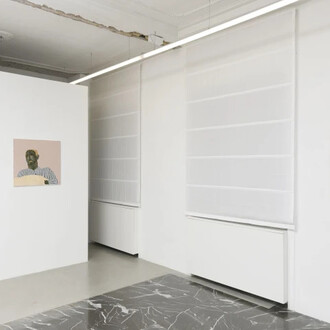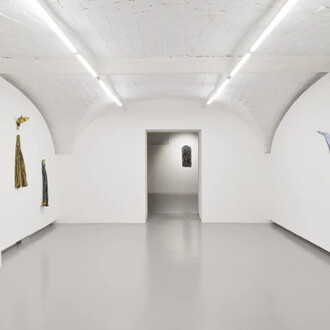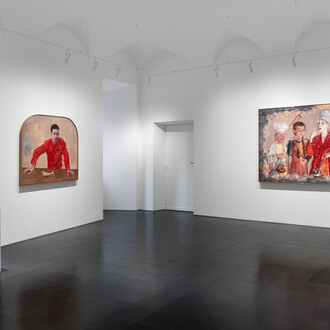If, as a thought experiment, one were to imagine that Isgrò’s entire visual oeuvre had never existed, his literary and poetic production alone would suffice to justify this and many other exhibitions and to leave an indelible mark on the cultural landscape.
Isgrò’s first poems, published by Schwarz in 1956, drew the attention of Pier Paolo Pasolini, who wrote about them in his article La poesia e il sud («Il punto», May 25, 1957).
A close friendship with Eugenio Montale followed, though the poet famously ceased speaking to Isgrò in 1966, after his provocative statement “The word is dead.”
A collection of his poems was published by Vittorini and Calvino in Einaudi’s Menabò, while his novels were printed by Feltrinelli, Mondadori, and Sellerio. Among them, L’avventurosa vita di Emilio Isgrò—recently reissued by Interlinea—was shortlisted for the Premio Strega.
He worked as a journalist for Il gazzettino, in Venice, editing, among others, articles by Giovanni Comisso. The story goes that, while revising one of Comisso’s texts—removing what he considered superfluous—, Isgrò conceived the idea of exploring the expressive and poetic power of Cancellatura (Erasure). He later served as an editor at «Oggi» under Enzo Biagi and continues to contribute to «Corriere della sera» and «La lettura».
Isgrò was invited by Ludovico Corrao to Gibellina, where he was commissioned to create a work inspired by Aeschylus’s Orestea for the reconstruction of the city destroyed by the 1968 earthquake. His theatrical trilogy L’orestea di Gibellina was staged among the ruins of the town on three occasions between 1983 and 1985.
This multifaceted body of work highlights the impossibility of separating Isgrò’s literary production from his visual art.
It is therefore the “word”—far from dead—that serves as the unifying thread between these two parallel paths. It is the word that – when erased – transcend its literal meaning to become a metaphor for the essential. And it is still the word, or rather, a multitude of words that composes his writings.
Rosso Shakespeare seeks to explore the boundary where word and image converge.
The exhibition brings together theatrical texts, poetry collections, and novels alongside visual works with literary or writing-related subjects. It opens with pieces from the 1970s, including VItale (1972), followed by Odysséus (2018), a reinterpretation of the Odyssey, and Ala italiana, Corriere (2013), based on the front page of Corriere della sera.
The final two rooms are devoted to William Shakespeare. Here, Isgrò’s Red Erasure—a signature motif of his most recent production—becomes a monumental presence in Romeo e Giulietta (2022) and Othello (2019), made up of 38 and 36 volumes respectively.














